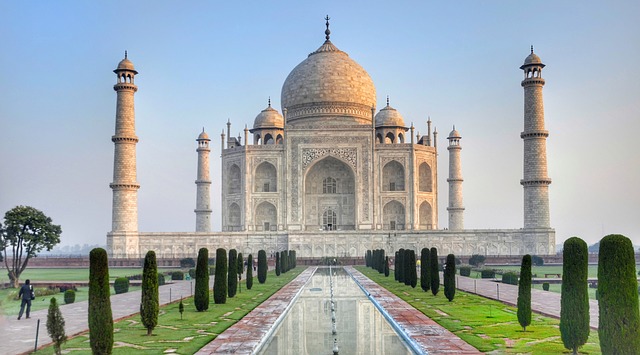Taj Mahal Facts
Below are some of the facts about Taj Mahal:
- The Taj Mahal was built by Shah Jahan, the 5th Mughal emperor in the memory of his third wife Arjumand Banu Begum, more popularly known as Mumtaz Mahal.
- Mumtaz died at the age of 39, while delivering her 14th child, and after her death the tomb was built.
- It took Shah Jahan’s workers 20 years to complete the construction of the Taj Mahal. The construction was started on 1632, the year following his wife’s death.
- The real grave of Mumtaz is actually not decorated, and the rest of the Mausoleum is fully and intricately decorated. This is because of the Islamic custom of not to ornate graves.
- Another grave, the grave of Shah Jahan was added to the Taj Mahal in 1666. The grave of Mumtaz Mahal is directly at the center of the mausoleum and the grave of the emperor was placed west to the center.
- The engineering of the Taj Mahal is a marvel. The design ensures that in case the structure collapses, every piece would fall off from the centre and nothing would collapse and fall over the central tomb. This was done by tilting the 130 ft tall 4 minarets to balance the weight distribution.
- The chief architect of the Taj Mahal was Ustad Ahmad Lahauri. He had employed 20,000 workers under him to erect the immense work of art.
- In those days the heavy marbles for the construction of the tomb were brought by elephants. The use of the elephants continued for full two decades.
- The Taj Mahal embodies many sculpted lines from the Quran on the body of the structure at several places. The lines are beautifully scripted, and the head calligrapher, Amanat Khan Shirazi, had been appreciated much for the work.
- The main garden of the Taj Mahal was later changed in layout and style by the British when they colonized in India. The Muslim style garden and flower beds got transformed and took the look of common English style gardens.
- During vast wars like the World War II and later India-Pakistan battles, the government took appropriate steps to camouflage the monument in several means. This made air flying bombers see the Taj Mahal as a pile of bamboos instead of the real thing, and helped the tomb hide in crises like this.
- In the last few years of his life, Shah Jahan was not permitted by his son Aurangzeb to enter the vicinity of the Taj Mahal again. Rather the old king lost his power and was imprisoned in a part of the great fort, from where he could only see the Taj Mahal
